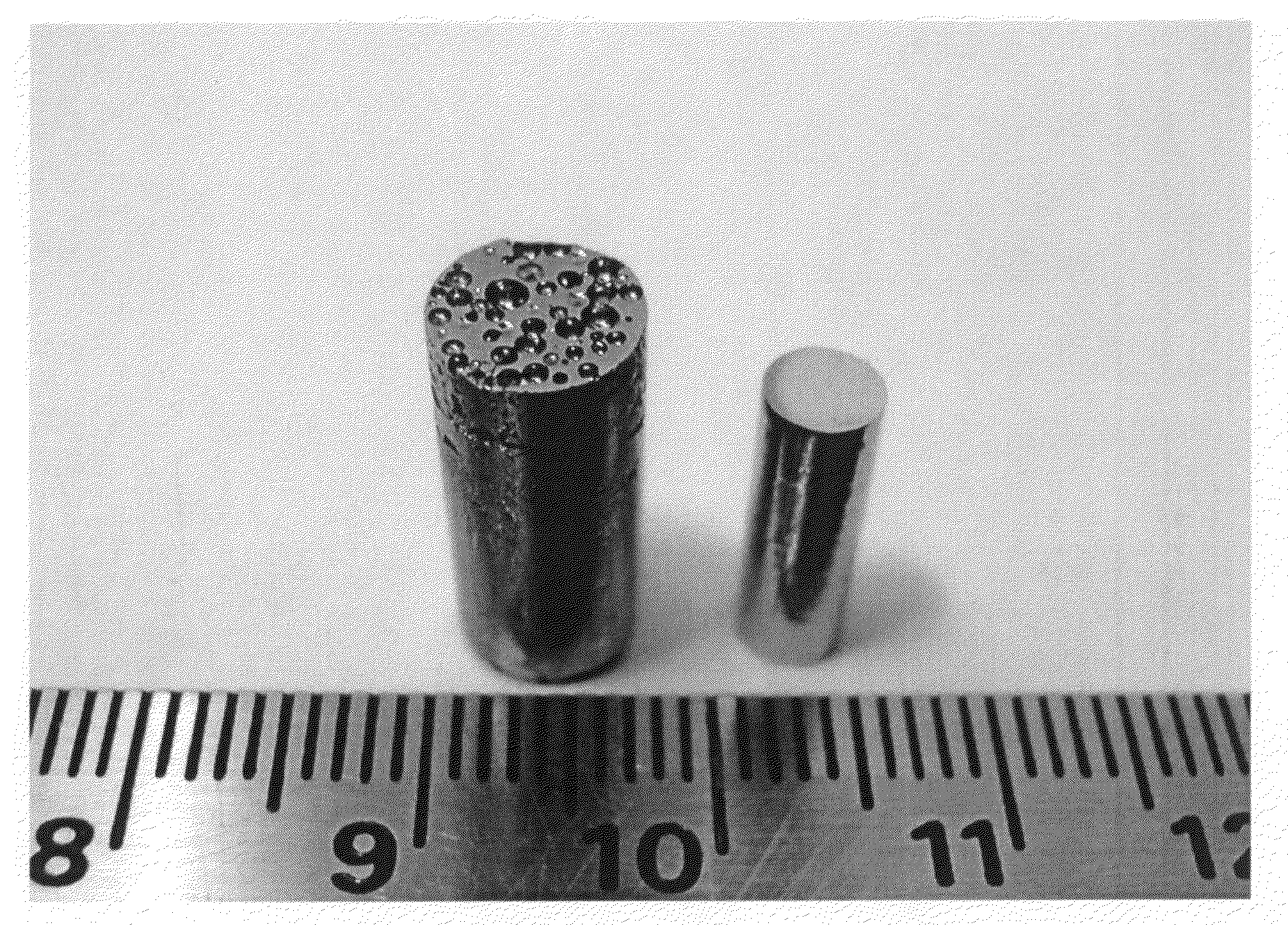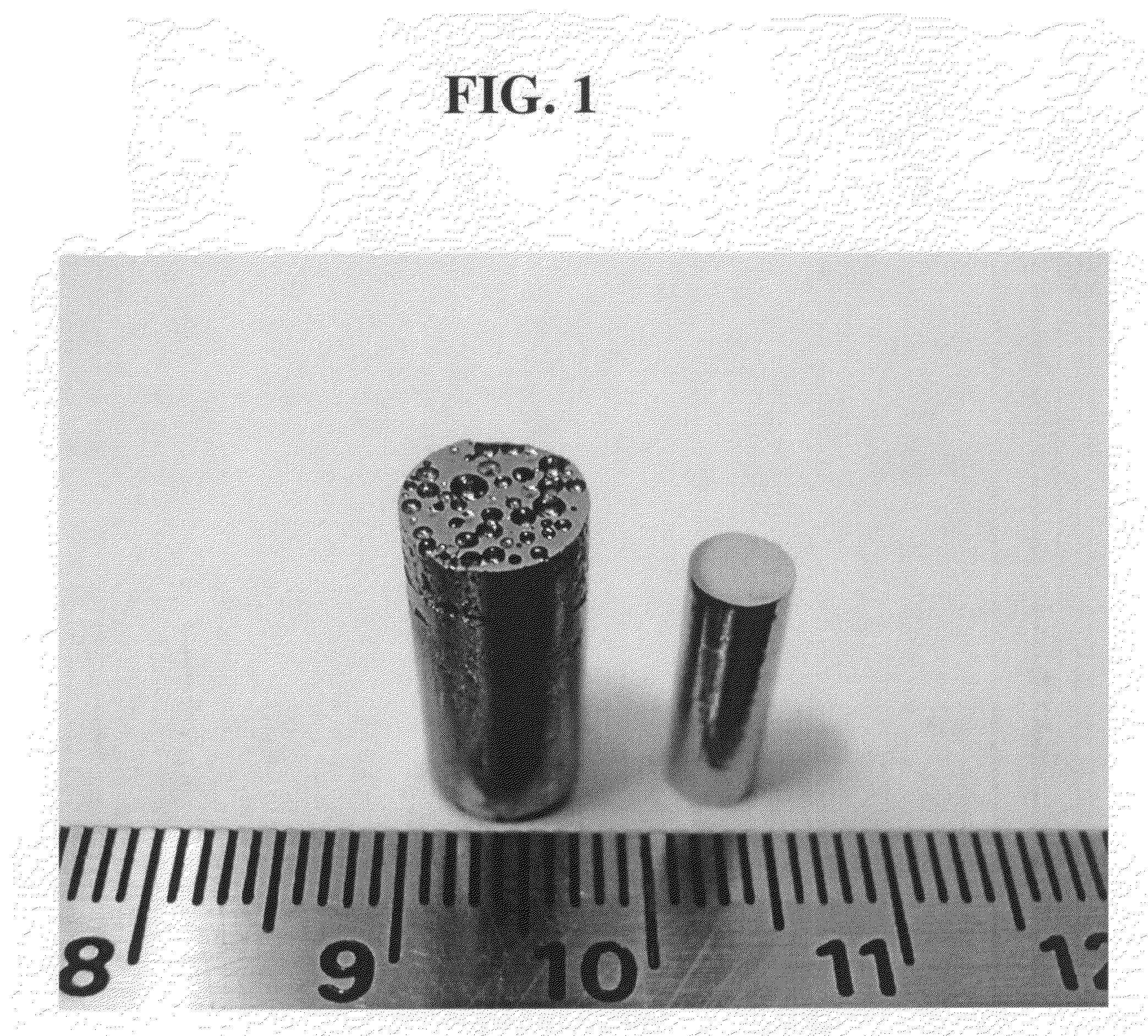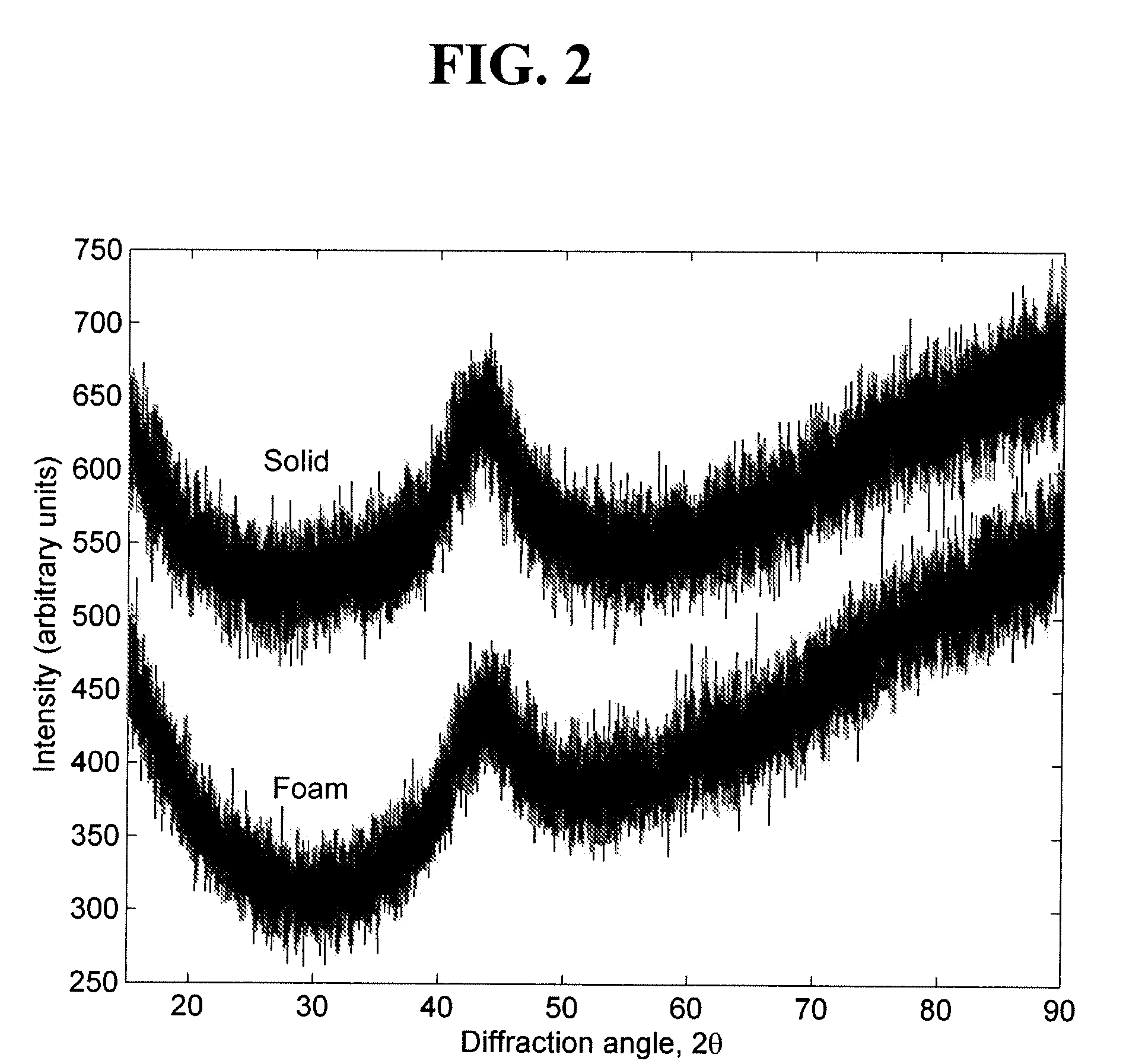Amorphous fe and co based metallic foams and methods of producing the same
a technology of metallic foam and fe, which is applied in the field of amorphous fe and co-based metallic foam, can solve the problems of sedimentation and the tendency of bubbles to form, and achieve the effects of low solubility of hydrogen, high viscosity and high viscosity
- Summary
- Abstract
- Description
- Claims
- Application Information
AI Technical Summary
Benefits of technology
Problems solved by technology
Method used
Image
Examples
example 1
[0025]Alloy ingots of Fe48Cr15 Mo14Y2C15B6 were prepared by melting the appropriate amounts of Fe (99.9%), Cr (99.99%), Mo (99.9%), Y (99.9%), C (99.99%), and B (99.9%) in an arc furnace under argon atmosphere. Commercial-grade ZrH2 powder (99.9% purity, <44 μm) was used as the hydrogen releasing agent. The agent to alloy mass ratio (which to some extent determined the final product porosity) was varied between 1% and 5%. The critical copper-mold casting thickness of the pore-free alloy is 9 mm. Because quartz-tube water quenching as well as the presence of pores in the liquid would result in a lower cooling rate than copper-mold casting of a pore-free glass, 7-mm ID quartz tubes were employed to ensure that the product would be rendered amorphous by quenching.
[0026]The alloy ingot was set on a bed of agent powder and heated inductively in the quartz tube under argon. The ambient pressure (which to some extent controlled the average pore size) was 1.5 atm. The melt temperature durin...
PUM
| Property | Measurement | Unit |
|---|---|---|
| porosity | aaaaa | aaaaa |
| porosity | aaaaa | aaaaa |
| mass ratio | aaaaa | aaaaa |
Abstract
Description
Claims
Application Information
 Login to View More
Login to View More - R&D
- Intellectual Property
- Life Sciences
- Materials
- Tech Scout
- Unparalleled Data Quality
- Higher Quality Content
- 60% Fewer Hallucinations
Browse by: Latest US Patents, China's latest patents, Technical Efficacy Thesaurus, Application Domain, Technology Topic, Popular Technical Reports.
© 2025 PatSnap. All rights reserved.Legal|Privacy policy|Modern Slavery Act Transparency Statement|Sitemap|About US| Contact US: help@patsnap.com



